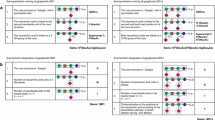Abstract.
Protein and lipid glycosylation is a ubiquitous phenomenon. The task of cataloguing the great structural variety of the glycan part has demanded considerable efforts over decades. This patient endeavor was imperative to discern the inherent rules of glycosylation which cannot affirm assumptions on a purely coincidental nature of this type of protein and lipid modification. These results together with theoretical considerations uncover a salient property of oligosaccharides. In comparison with amino acids and nucleotides, monosaccharides excel in their potential to serve as units of hardware for storing biological information. Thus, the view that glycan chains exclusively affect physicochemical properties of the conjugates is indubitably flawed. This original concept has been decisively jolted by the discovery of endogenous receptors (lectins) for distinct glycan epitopes which are as characteristic as a fingerprint or a signature for a certain protein (class) or cell type. Recent evidence documents that these binding proteins are even endowed with the capacity to select distinct low-energy conformers of the often rather flexible oligosaccharides, granting entry to a new level of regulation of ligand affinity by shifting conformer equilibria. The assessment of the details of this recognition by X-ray crystallography, nuclear magnetic resonance spectroscopy, microcalorimetry and custom-made derivatives is supposed to justify a guarded optimism in satisfying the need for innovative drug design in antiadhesion therapy, for example against viral or bacterial infections and unwanted inflammation. This review presents a survey of the structural aspects of glycosylation and of evidence to poignantly endorse the notion that carrier-attached glycan chains can partake in biological information transfer at the level of cell compartments, cells and organs.
Similar content being viewed by others
Author information
Authors and Affiliations
Additional information
Received 2 October 1998; received after revision 17 November 1998; accepted 17 November 1998
Rights and permissions
About this article
Cite this article
Reuter, G., Gabius, HJ. Eukaryotic glycosylation: whim of nature or multipurpose tool?. CMLS, Cell. Mol. Life Sci. 55, 368–422 (1999). https://doi.org/10.1007/s000180050298
Issue Date:
DOI: https://doi.org/10.1007/s000180050298




